How to build a php environment on linux
How to build a php environment on Linux: 1. Open the terminal and install XAMPP for Linux; 2. Open the terminal and download PhpStorm through the command; 3. Open PhpStorm and select Activation code to activate; 4. Create a PHP A sample file will do.
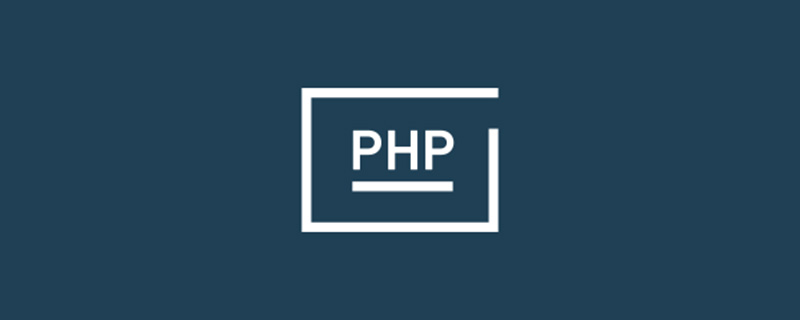
The operating environment of this article: linux5.9.8 system, PHP7.1 version, DELL G3 computer
php development environment Quickly build
1. Quickly build a php development environment under Linux
1. Install XAMPP for Linux
XAMPP (Apache MySQL PHP PERL) is a powerful website-building integrated software package. Using XAMPP, you can quickly build a PHP development environment. Download link: https://www.apachefriends.org/download.html Enter the download interface and select XAMPP for LinuxDownload
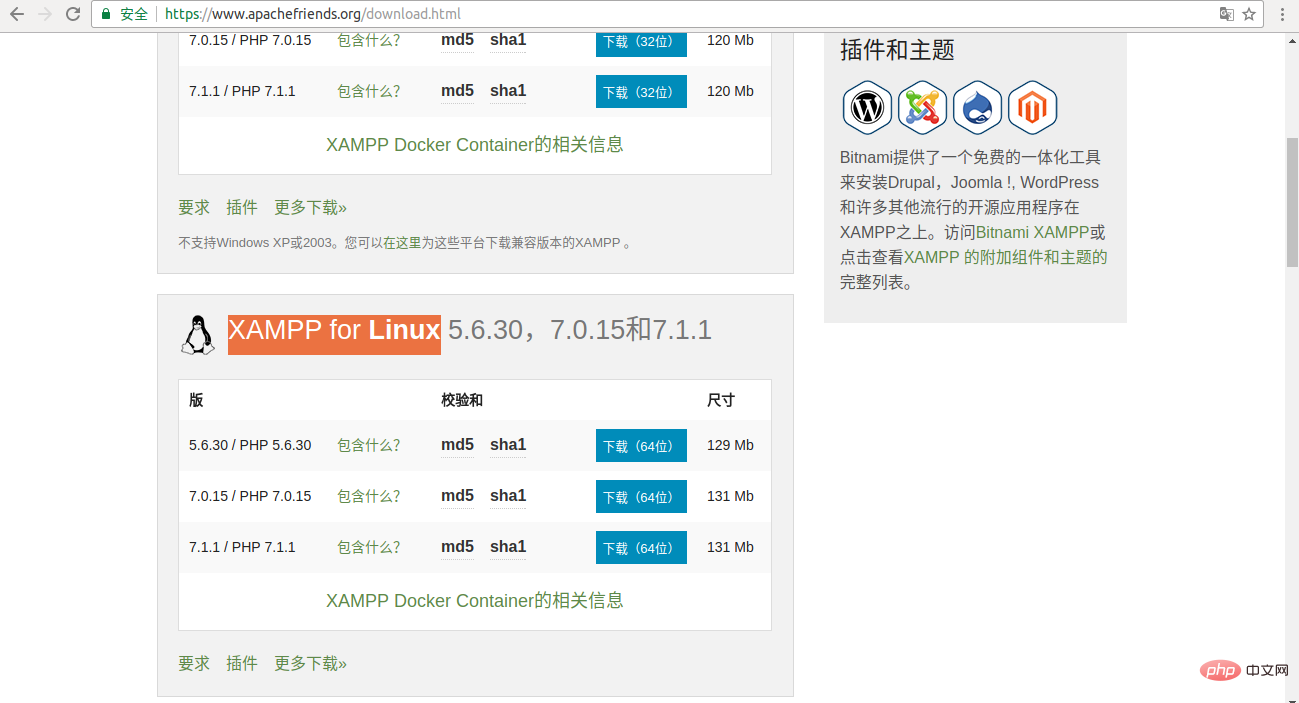
Start the terminal and enter the command cd /Download the path saved by xampp. My save path is: /home/coderose/download. To change the installation permissions of the installer, enter the command: chmod 755 xampp-linux-*-installer.run (Note: the asterisk represents the version number of XAMPP you downloaded). Run the installation program and enter the command: ./xampp-linux-*-installer.run After successful installation, use the command: sudo /opt/lampp/lampp start to start.
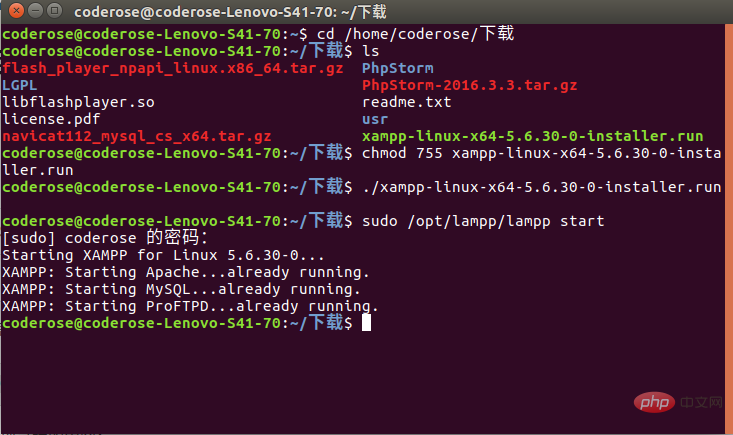
(Note: cd command: used to switch the working directory to dirname. ls command: list all files in the directory. chomd command: modify file permissions)
2. Install PhpStorm
PhpStorm is a lightweight and convenient PHP IDE. It is designed to improve user efficiency, deeply understand user coding, and provide intelligent code completion. Fast navigation and instant error checking.
Download link: http://www.jetbrains.com/phpstorm/download/#section=linux
After the download is complete, open the terminal and enter the command: cd /home/coderose/Download (transfer Go to the directory where the downloaded file is located)
Enter the command: tar -xvzf PhpStorm-2016.3.3.tar.gz (change the file name to PhpStorm after decompression)
Enter the command: cd /home/ coderose/Download/PhpStorm/bin (Go to the bin directory under the unzipped file PhpStorm)
Enter the command: ./phpstorm.sh (installation)
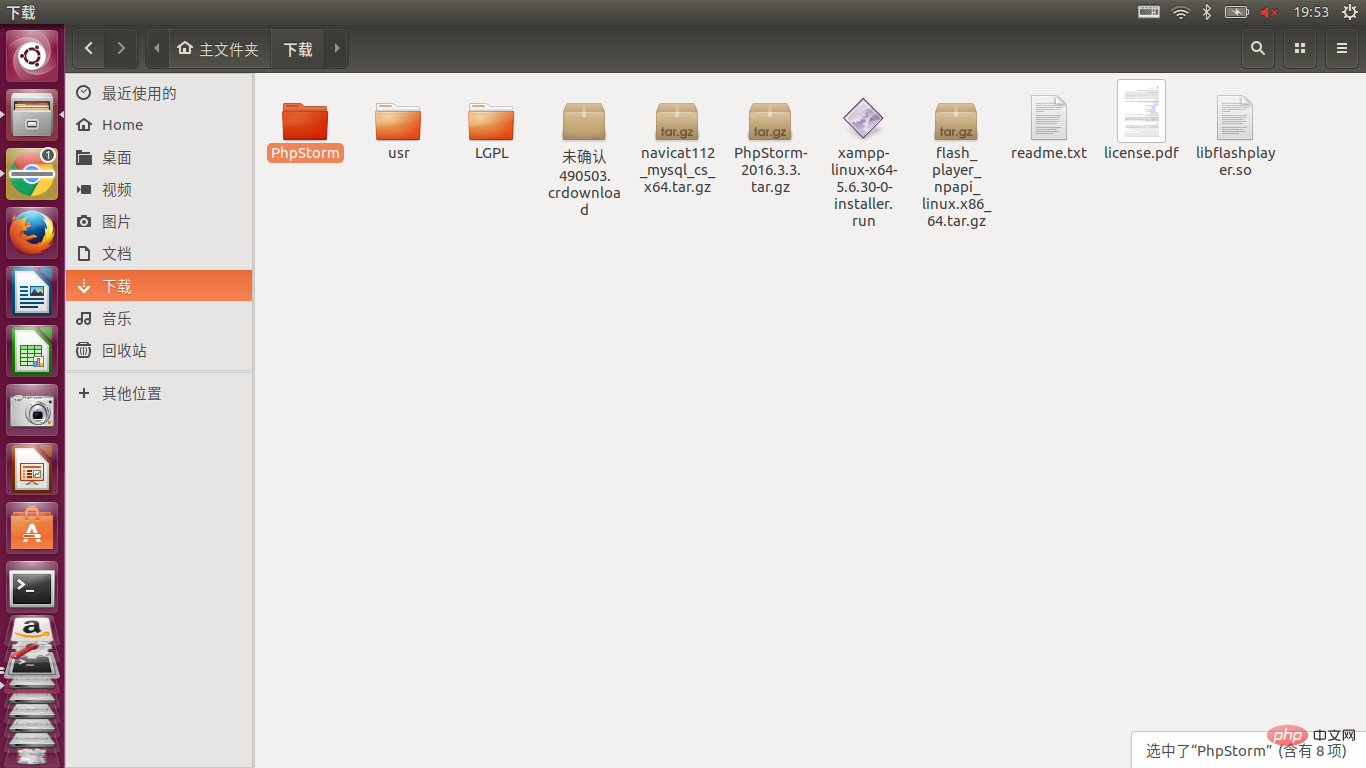
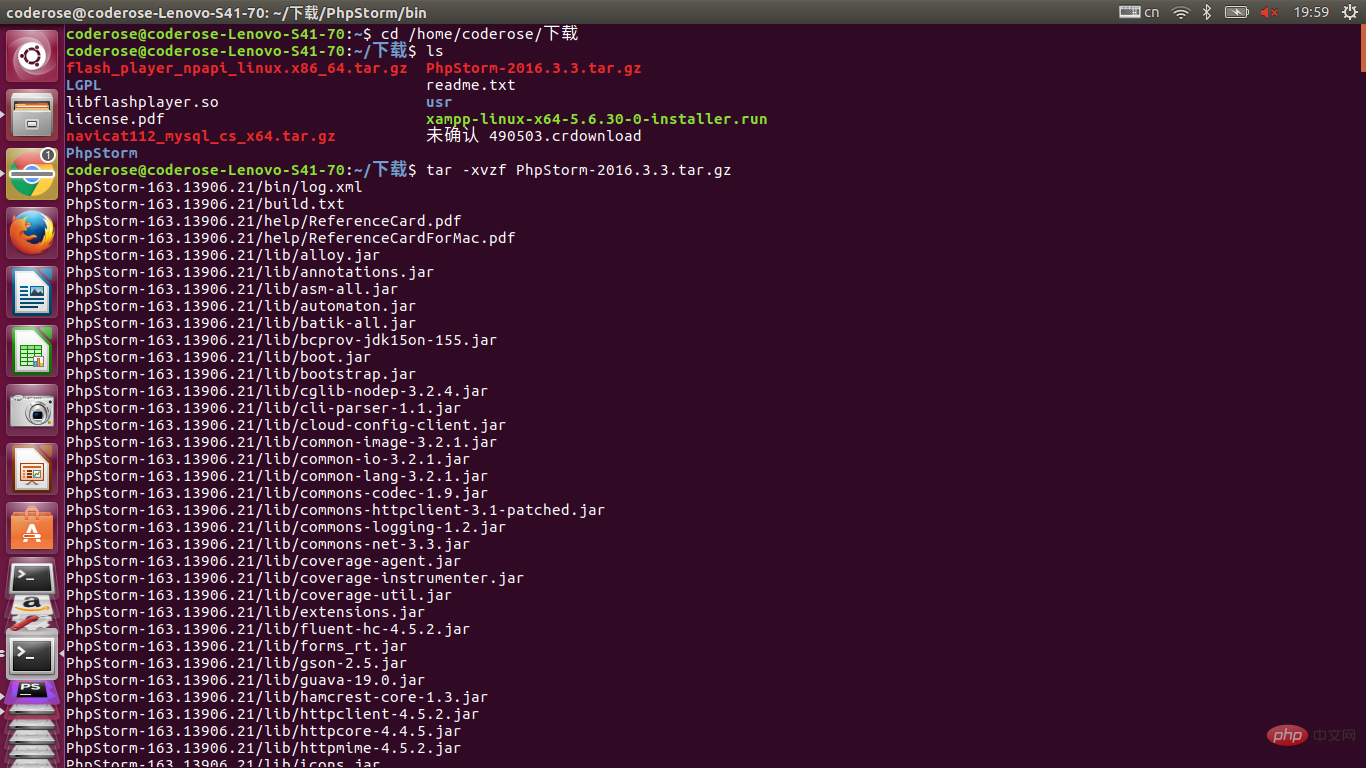
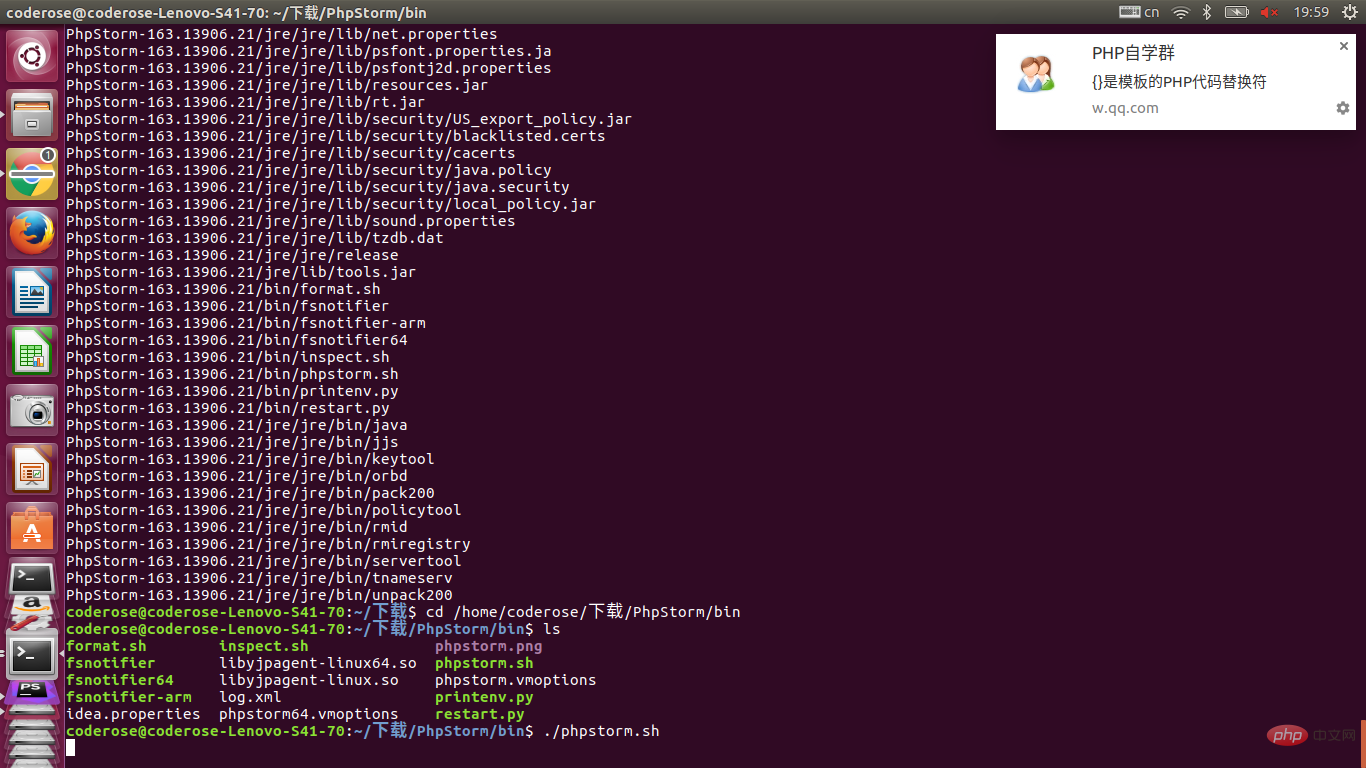
3. Activate the most useful PHP IDE in the world
Open PhpStorm and select Activation code. Enter the code obtained from http://idea.lanyus.com in one column. Get the registration code and paste and copy. Click Activate to activate (you get the $199 software, so happy!)
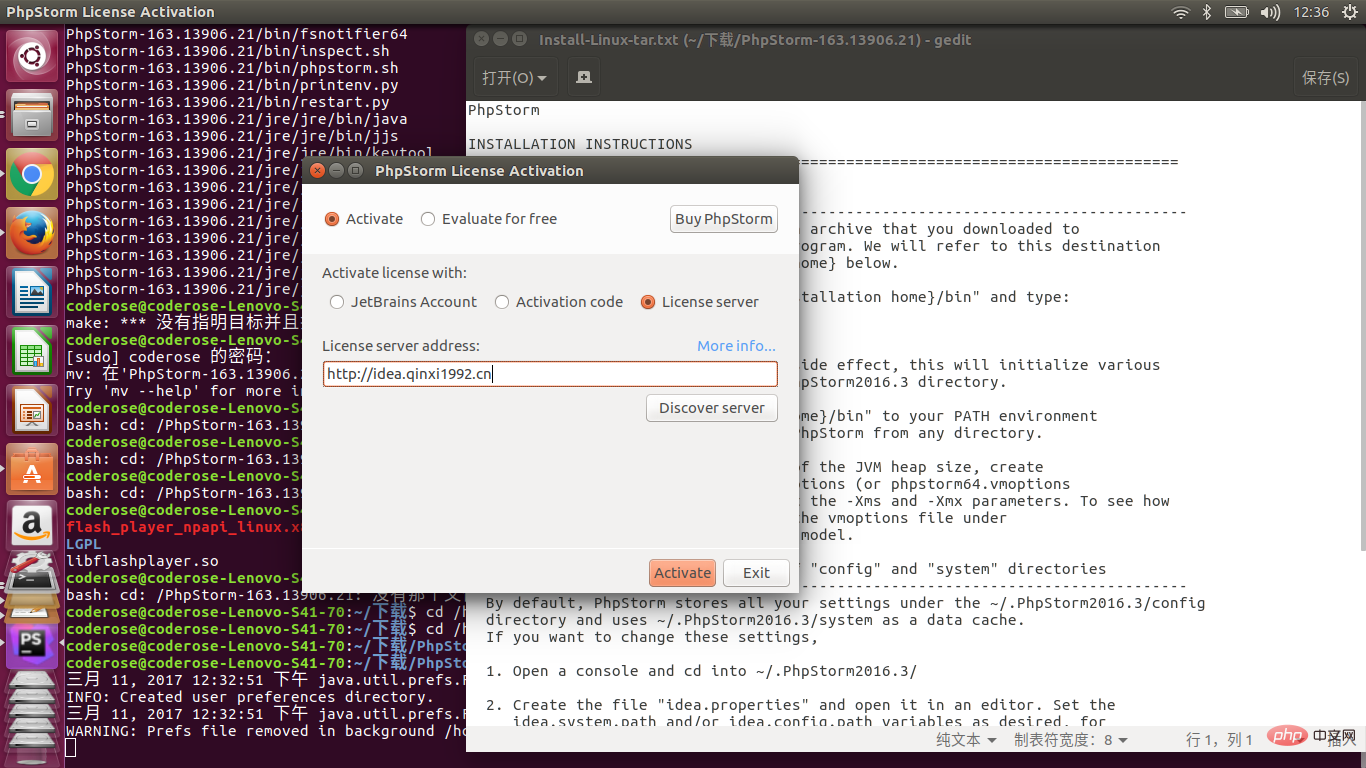
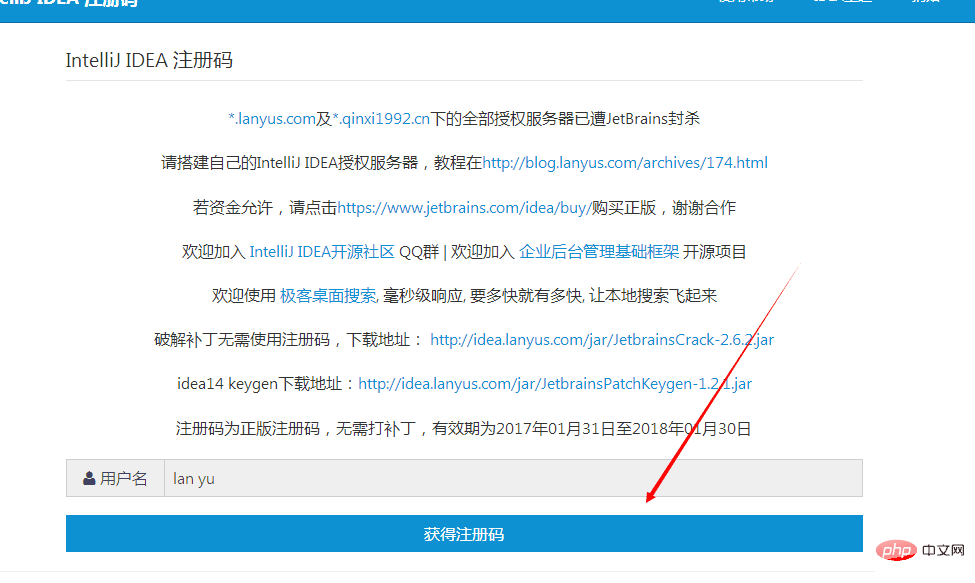
4. Create the first PHP Small demo
(1) Open PhpStorm: (1) Create a demo.html
<!DOCTYPE html><html lang="en"><head> <meta charset="UTF-8"> <title>php小demo</title></head><body><form action="demo.php" method="post"> <table border="1"> <tr> <td>姓名:</td> <td><input type="text" name="name1"></td> </tr> <tr> <td colspan="2" align="center"><input type="submit" value="提交"></td> </tr> </table></form></body></html>
(2) Create demo.php
<!DOCTYPE html> <html lang="en"> <head> <meta charset="UTF-8"> <title>php小demo</title> </head> <body> <?php echo "hi!"; ?> </body> </html>
(3) In Fill in the form form data and click the submit button, which will jump to the demo.php page as shown:
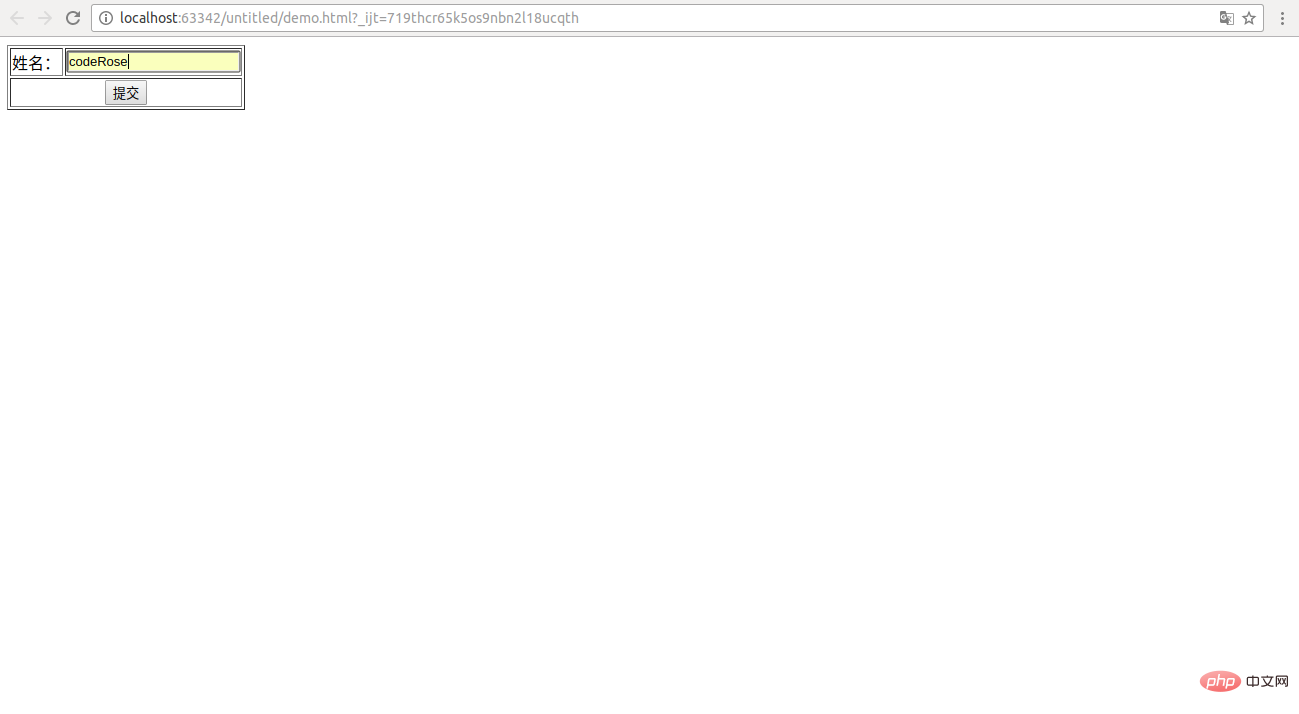
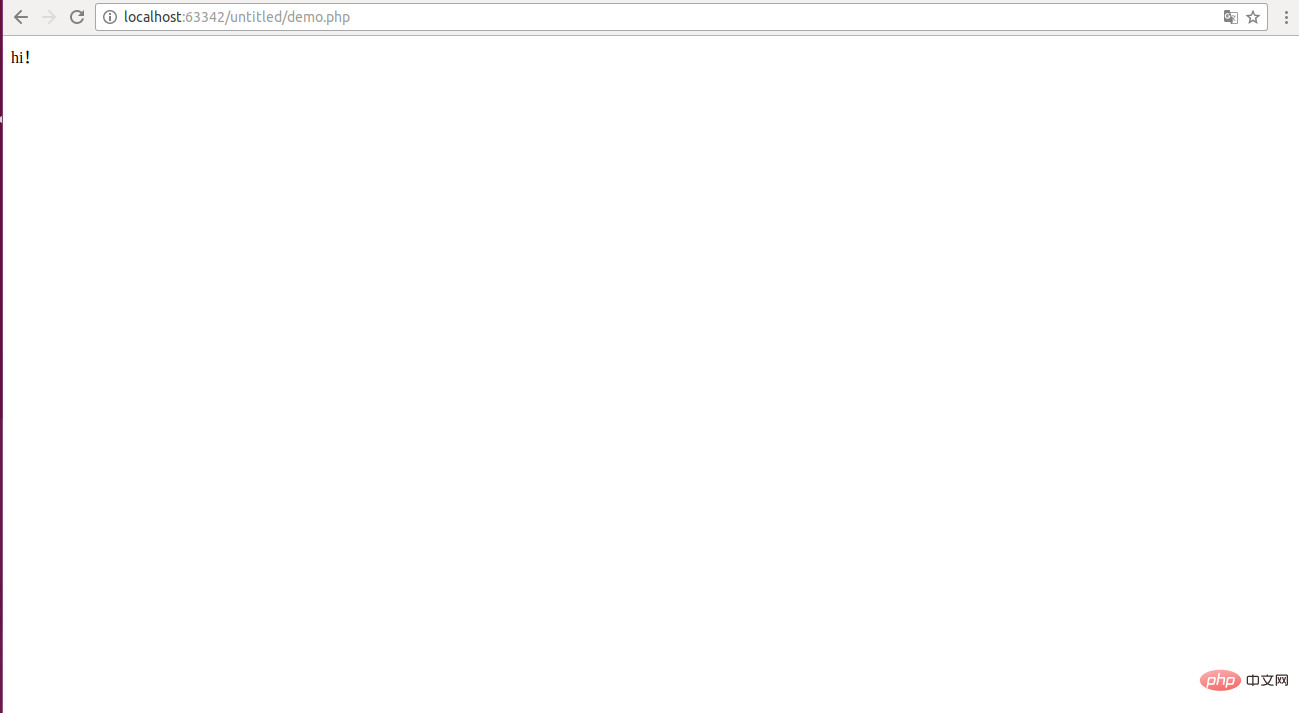
Recommended learning: " PHP video tutorial》
The above is the detailed content of How to build a php environment on linux. For more information, please follow other related articles on the PHP Chinese website!

Hot AI Tools

Undresser.AI Undress
AI-powered app for creating realistic nude photos

AI Clothes Remover
Online AI tool for removing clothes from photos.

Undress AI Tool
Undress images for free

Clothoff.io
AI clothes remover

Video Face Swap
Swap faces in any video effortlessly with our completely free AI face swap tool!

Hot Article

Hot Tools

Notepad++7.3.1
Easy-to-use and free code editor

SublimeText3 Chinese version
Chinese version, very easy to use

Zend Studio 13.0.1
Powerful PHP integrated development environment

Dreamweaver CS6
Visual web development tools

SublimeText3 Mac version
God-level code editing software (SublimeText3)

Hot Topics
 1663
1663
 14
14
 1419
1419
 52
52
 1313
1313
 25
25
 1263
1263
 29
29
 1236
1236
 24
24
 PHP and Python: Different Paradigms Explained
Apr 18, 2025 am 12:26 AM
PHP and Python: Different Paradigms Explained
Apr 18, 2025 am 12:26 AM
PHP is mainly procedural programming, but also supports object-oriented programming (OOP); Python supports a variety of paradigms, including OOP, functional and procedural programming. PHP is suitable for web development, and Python is suitable for a variety of applications such as data analysis and machine learning.
 Choosing Between PHP and Python: A Guide
Apr 18, 2025 am 12:24 AM
Choosing Between PHP and Python: A Guide
Apr 18, 2025 am 12:24 AM
PHP is suitable for web development and rapid prototyping, and Python is suitable for data science and machine learning. 1.PHP is used for dynamic web development, with simple syntax and suitable for rapid development. 2. Python has concise syntax, is suitable for multiple fields, and has a strong library ecosystem.
 Linux Architecture: Unveiling the 5 Basic Components
Apr 20, 2025 am 12:04 AM
Linux Architecture: Unveiling the 5 Basic Components
Apr 20, 2025 am 12:04 AM
The five basic components of the Linux system are: 1. Kernel, 2. System library, 3. System utilities, 4. Graphical user interface, 5. Applications. The kernel manages hardware resources, the system library provides precompiled functions, system utilities are used for system management, the GUI provides visual interaction, and applications use these components to implement functions.
 PHP and Python: A Deep Dive into Their History
Apr 18, 2025 am 12:25 AM
PHP and Python: A Deep Dive into Their History
Apr 18, 2025 am 12:25 AM
PHP originated in 1994 and was developed by RasmusLerdorf. It was originally used to track website visitors and gradually evolved into a server-side scripting language and was widely used in web development. Python was developed by Guidovan Rossum in the late 1980s and was first released in 1991. It emphasizes code readability and simplicity, and is suitable for scientific computing, data analysis and other fields.
 PHP's Impact: Web Development and Beyond
Apr 18, 2025 am 12:10 AM
PHP's Impact: Web Development and Beyond
Apr 18, 2025 am 12:10 AM
PHPhassignificantlyimpactedwebdevelopmentandextendsbeyondit.1)ItpowersmajorplatformslikeWordPressandexcelsindatabaseinteractions.2)PHP'sadaptabilityallowsittoscaleforlargeapplicationsusingframeworkslikeLaravel.3)Beyondweb,PHPisusedincommand-linescrip
 The Continued Use of PHP: Reasons for Its Endurance
Apr 19, 2025 am 12:23 AM
The Continued Use of PHP: Reasons for Its Endurance
Apr 19, 2025 am 12:23 AM
What’s still popular is the ease of use, flexibility and a strong ecosystem. 1) Ease of use and simple syntax make it the first choice for beginners. 2) Closely integrated with web development, excellent interaction with HTTP requests and database. 3) The huge ecosystem provides a wealth of tools and libraries. 4) Active community and open source nature adapts them to new needs and technology trends.
 laravel installation code
Apr 18, 2025 pm 12:30 PM
laravel installation code
Apr 18, 2025 pm 12:30 PM
To install Laravel, follow these steps in sequence: Install Composer (for macOS/Linux and Windows) Install Laravel Installer Create a new project Start Service Access Application (URL: http://127.0.0.1:8000) Set up the database connection (if required)
 Docker on Linux: Containerization for Linux Systems
Apr 22, 2025 am 12:03 AM
Docker on Linux: Containerization for Linux Systems
Apr 22, 2025 am 12:03 AM
Docker is important on Linux because Linux is its native platform that provides rich tools and community support. 1. Install Docker: Use sudoapt-getupdate and sudoapt-getinstalldocker-cedocker-ce-clicotainerd.io. 2. Create and manage containers: Use dockerrun commands, such as dockerrun-d--namemynginx-p80:80nginx. 3. Write Dockerfile: Optimize the image size and use multi-stage construction. 4. Optimization and debugging: Use dockerlogs and dockerex




